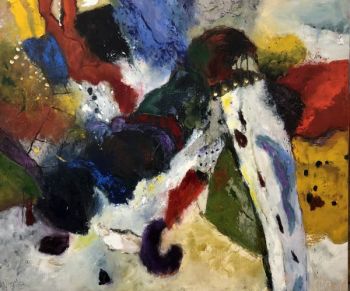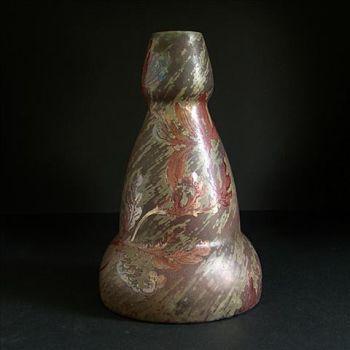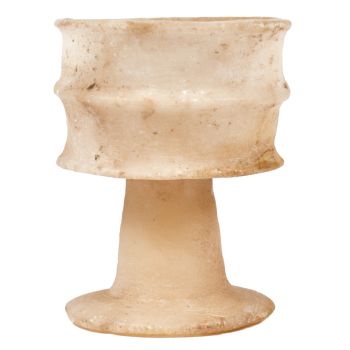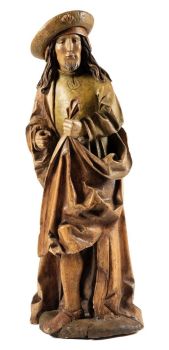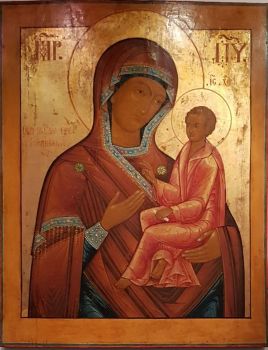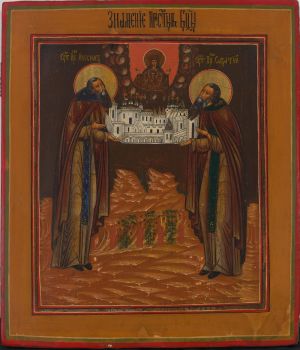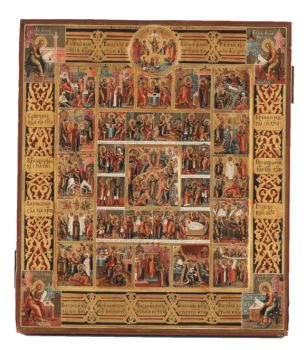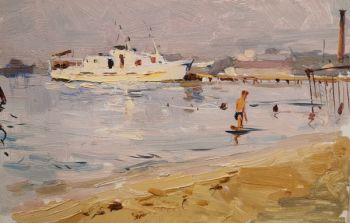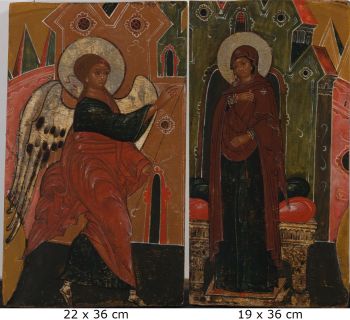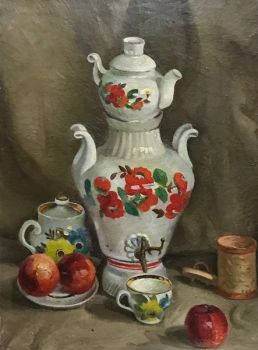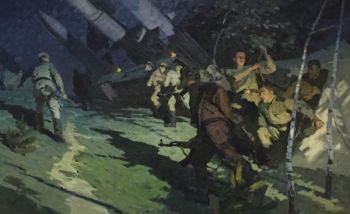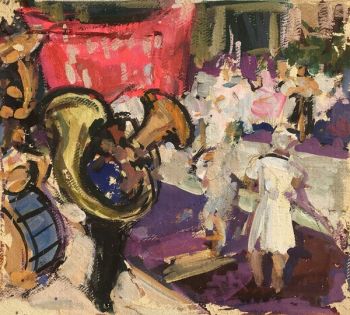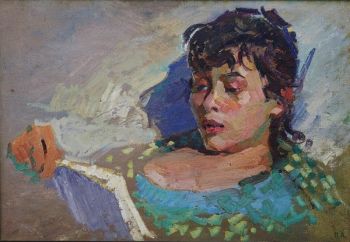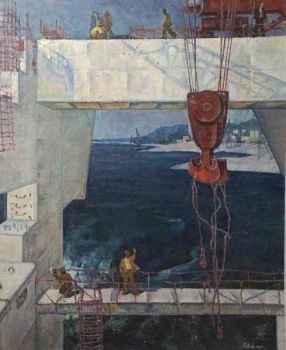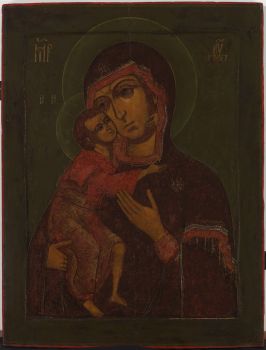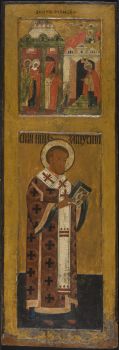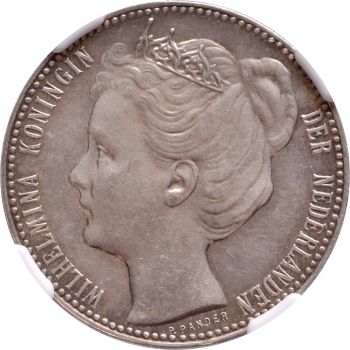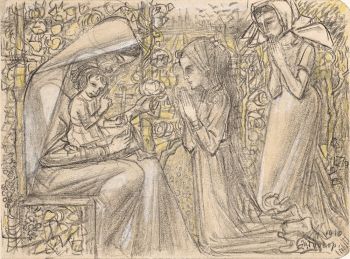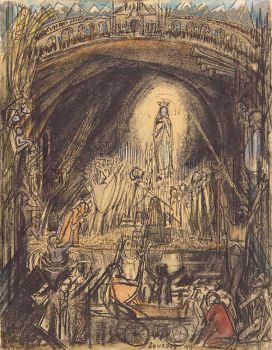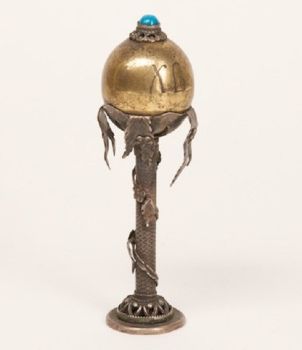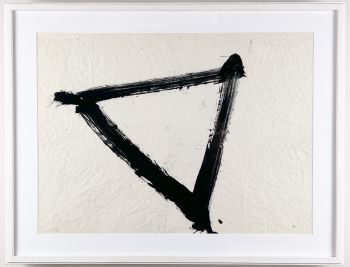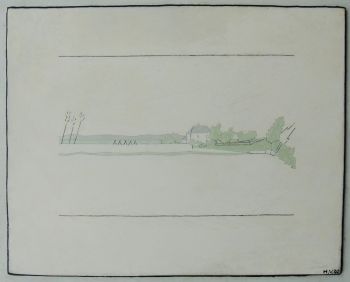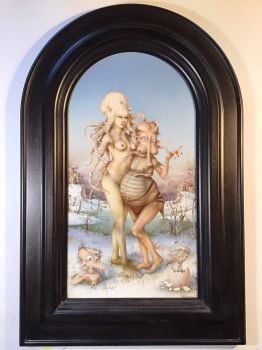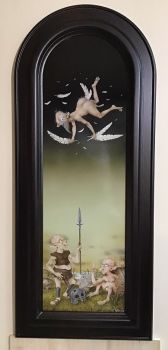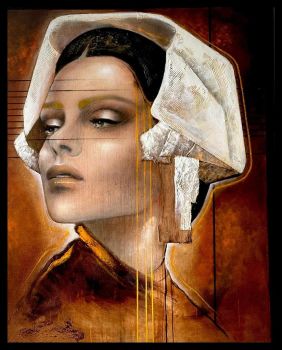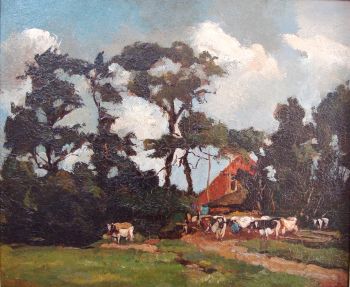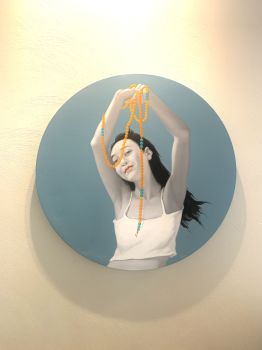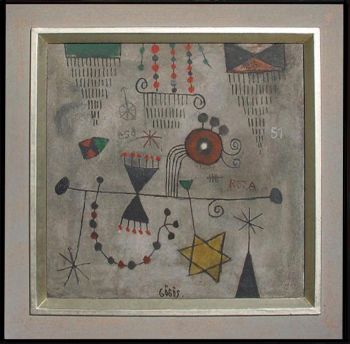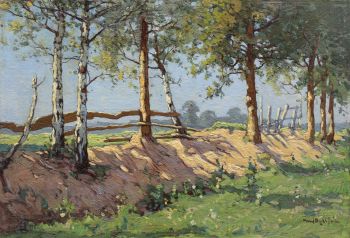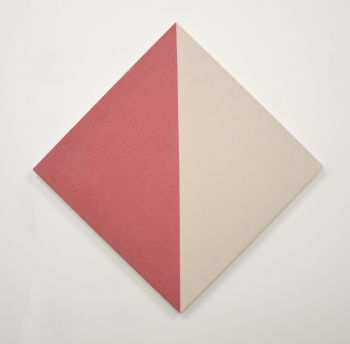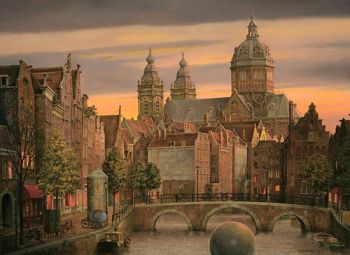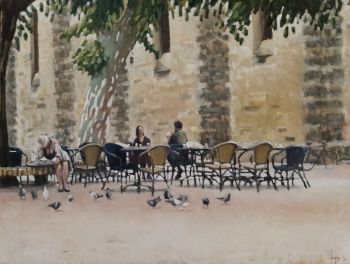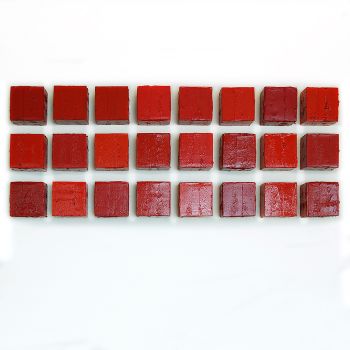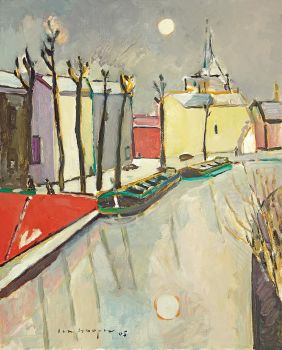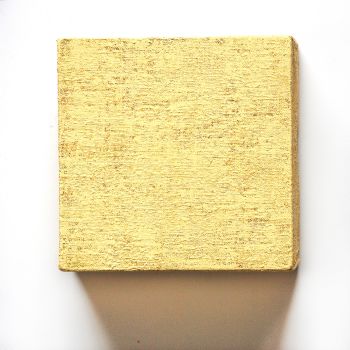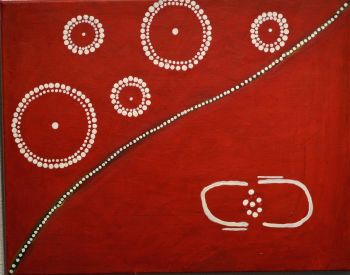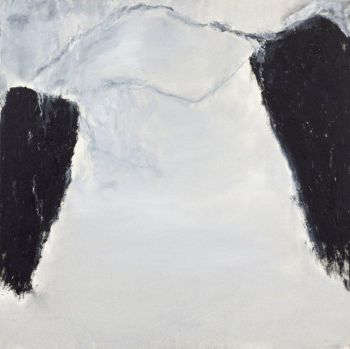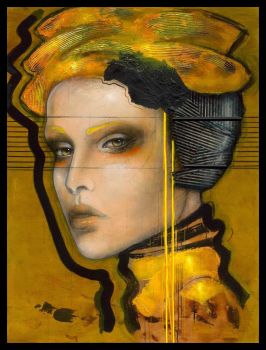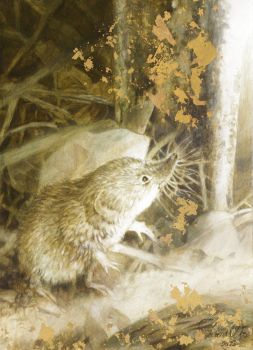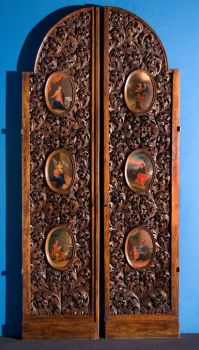Icône de la Russie centrale: Pokrov de la Mère de Dieu 18th century
Artiste Inconnu
BoisTempera aux œufsPeindre
32 ⨯ 27 cm
ConditionExcellent
€ 3.500
Kunsthandel H.W.C. Dullaert Icons
- Sur l'oeuvre d'art9332 Central Russian Icon – Pokrov of the Mother of God. This Central Russian icon combines two different events separated in time by a period of four hundred years but celebrated on the same day in the church calendar. According to tradition the vision of the Mother of God was granted only to St. Anthony the Holy Fool (died 956) who is seen gesturing below right. Mary is accompanied by archangels, the twelve apostles, bishops, holy women, monks and martyrs, spreading her veil in protection over the congregation. Below, center, are St. Romanos the Melodist and his choir attended by the Emperor Leo the Wise together with the Empress and the Patriarch of Constantinople. These figures are historical, dating to the 6th century. The icon combines these two events of the 6th and the 10th century both of which took place in the no longer existing Church of Blachernae in Constantinople. The cult and its corresponding image are only found in Russia from the 14th century. The Feast of the Pokrov is celebrated on 14th October (1st Oct. ‘old style’), the day traditionally regarded by Russians as the first day of winter. This Early 18th Century icon is painted in a fine hand most likely in an Old Believers workshop. Egg tempera on levkas on a wooden panel. 32 X 27 cm.
- Sur l'artiste
Il peut arriver qu'un artiste ou un créateur soit inconnu.
Certaines œuvres ne doivent pas être déterminées par qui elles sont faites ou elles sont faites par (un groupe d') artisans. Les exemples sont des statues de l'Antiquité, des meubles, des miroirs ou des signatures qui ne sont pas claires ou lisibles, mais aussi certaines œuvres ne sont pas signées du tout.
Vous pouvez également trouver la description suivante :
•"Attribué à …." A leur avis probablement une oeuvre de l'artiste, au moins en partie
•« Atelier de …. ou « Atelier de » À leur avis, une œuvre exécutée dans l'atelier ou l'atelier de l'artiste, éventuellement sous sa direction
•« Cercle de… ». A leur avis une oeuvre de la période de l'artiste témoignant de son influence, étroitement associée à l'artiste mais pas forcément son élève
•« Style de … ». ou "Suiveur de ...." Selon eux, une œuvre exécutée dans le style de l'artiste mais pas nécessairement par un élève ; peut être contemporain ou presque contemporain
•« Manière de… ». A leur avis une oeuvre dans le style de l'artiste mais d'une date plus tardive
•"Après …." A leur avis une copie (quelle qu'en soit la date) d'une oeuvre de l'artiste
•« Signé… », « Daté… ». ou « Inscrit » À leur avis, l'œuvre a été signée/datée/inscrite par l'artiste. L'ajout d'un point d'interrogation indique un élément de doute
• "Avec signature ….", "Avec date ….", "Avec inscription …." ou "Porte signature/date/inscription" à leur avis la signature/date/inscription a été ajoutée par quelqu'un d'autre que l'artiste
Êtes-vous intéressé par l'achat de cette oeuvre?
Artwork details
Related artworks
Artiste Inconnu
UN MODÈLE JAPONAIS D'UN NORIMONO, UN PALANQUIN1650 - 1700
Prix sur demandeZebregs & Röell - Fine Art - Antiques
1 - 4 / 12Artiste Inconnu
Ancienne icône en bois russe: Archange Gabrielearly 17th
Prix sur demandeKunsthandel H.W.C. Dullaert Icons
Artiste Inconnu
UITGEBREIDE FEESTDAGENIKOON MET PASSIECYCLUS19th century
Prix sur demandeHeutink Ikonen
1 - 4 / 24Artiste Inconnu
Ancienne icône en bois russe: Archange Gabrielearly 17th
Prix sur demandeKunsthandel H.W.C. Dullaert Icons
Artiste Inconnu
Icône russe représentant une Deesis étendue1600 - 1650
Prix sur demandeKunsthandel H.W.C. Dullaert Icons
Artiste Inconnu
Icône monumentale en bois: Saint Nicolas de Mozaisk1600 - 1650
Prix sur demandeKunsthandel H.W.C. Dullaert Icons
Artiste Inconnu
UITGEBREIDE FEESTDAGENIKOON MET PASSIECYCLUS19th century
Prix sur demandeHeutink Ikonen
1 - 4 / 24Artiste Inconnu
Ancienne icône en bois russe: Archange Gabrielearly 17th
Prix sur demandeKunsthandel H.W.C. Dullaert Icons
Artiste Inconnu
UITGEBREIDE FEESTDAGENIKOON MET PASSIECYCLUS19th century
Prix sur demandeHeutink Ikonen
Artiste Inconnu
Icône monumentale en bois: Saint Nicolas de Mozaisk1600 - 1650
Prix sur demandeKunsthandel H.W.C. Dullaert Icons
Artiste Inconnu
Oeuf de Pâques de présentation russe en argent1880 - 1899
Prix sur demandeH.W.C. Dullaert Art & Antiques Dealer
Artiste Inconnu
Icône russe représentant une Deesis étendue1600 - 1650
Prix sur demandeKunsthandel H.W.C. Dullaert Icons
1 - 4 / 24- 1 - 4 / 24
Artiste Inconnu
Ancienne icône en bois russe: Archange Gabrielearly 17th
Prix sur demandeKunsthandel H.W.C. Dullaert Icons
1 - 4 / 12






